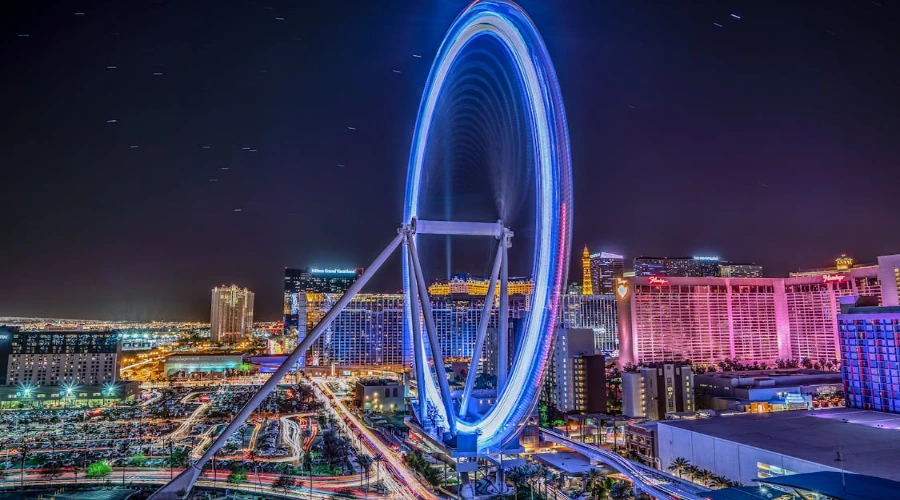 August 18 2025
August 18 2025
A night at the casino is more than just the games. It’s the weight of velvet on your fingertips, the rhythmic sounds of chips stacking, the ambient music humming in the background, and the soft flicker of light across the felt. But now that more players are gaming from home, the question has shifted — can an online platform recreate the same kind of atmosphere?
Turns out, the answer is yes — and not by accident. The best virtual casinos don’t just offer games. They design entire sensory experiences. From thematic lobbies to immersive soundtracks and real-time dealer interactions, the rise of immersive UX is closing the gap between physical venues and digital play.
A well-crafted virtual casino environment does more than look nice. It lowers friction, builds emotional engagement, and helps players stay in flow. These immersive layers bring familiarity to the digital space, which can feel sterile without them. That’s especially true in spaces that try to emulate premium lounge settings or cultural themes.
Many platforms that simulate a high-end lounge or themed environment, such as an online casino in Australia, for instance, focus heavily on mood-setting through audiovisual design.
Their goal is simple: make players feel like they’re part of something sophisticated and engaging, even from the comfort of their home. The use of ambient sounds, real dealer video streams, or even weather-matching visuals (like snow in winter-themed games) helps blur the line between physical and digital space.
Atmosphere doesn’t stop at the lobby. It runs through the heart of the games themselves. A great example can be seen in the new pokies that are really raising the bar, which don’t just rely on flashy mechanics. These pokies elevate the experience with cinematic intros, high-res animations, and clever use of vertical or landscape formats.
The newest generation of pokies doesn’t just ask you to spin. It invites you into a short story, with visuals that wouldn’t look out of place in a graphic novel or animated series. These games often feature original music, unique art direction, and layered sound effects that respond in real time. You’re not just playing — you’re immersed.
Here’s where the difference becomes clear: older slot games focused on payouts and mechanics, but modern ones blend aesthetics, sound, and themes into a more cohesive, sensory-driven experience. And it’s working. Players are increasingly drawn to titles that feel alive.
For many players, immersion begins before a single card is dealt. The interface — often designed with luxury or cinematic themes — sets the emotional tone. Think sleek layouts, subtle animations, and curated music that aligns with the type of game being played. Slot titles come with genre-specific sound design, from sci-fi beeps to orchestral stings, heightening anticipation with each spin.
Casual players might overlook it, but every design element is intentional. Fonts are chosen for elegance or edge. Button responses have a specific weight or glow. The mood isn’t just background noise — it’s a core part of the play experience.
Another key to immersion is sound. Think of it as the emotional anchor. In a brick-and-mortar venue, you’d hear the shuffle of cards, distant conversations, and music that keeps energy high. Online, developers now use layered sound environments to replicate this.
Some platforms allow you to adjust the background music or toggle between lounge, jazz, or techno tracks, depending on mood. Live dealer games even include natural sound from the room — subtle movements, spoken calls, table rustling — to ground the experience in something tangible.
In many cases, chat features and emoji reactions enhance this social fabric. While it’s not quite the same as leaning over to talk with the player beside you, these subtle cues create a rhythm of shared presence, which is often missing in solo gameplay.
| Atmosphere Element | In-Person Casino | Online Equivalent |
|---|---|---|
| Lighting | Mood lighting, soft neon | Thematic UI with dark or gold tones |
| Sound | Background music, chatter | Custom audio layers, live room sounds |
| Social Interaction | Players at the same table | Live dealer chat, real-time reactions |
| Tactile Feedback | Chips, cards, felt table | Button animations, haptic vibrations (app) |
| Environment | Architecture, dress code | Themed digital lobbies, stylized interfaces |
As technology progresses, virtual environments are becoming more personalized. In the near future, users may be able to choose between different themes depending on their mood — whether it’s a retro 1980s lounge, a minimalist Tokyo aesthetic, or a jungle adventure. Some platforms are already testing adaptive environments that respond to player behavior, changing lighting or sound based on how long you’ve been active or how a session is progressing.
These developments suggest that immersion will only deepen. Rather than mimic physical casinos exactly, online platforms are starting to offer something unique — experiences that aren’t limited by physical architecture or real-world constraints. That gives them room to innovate, experiment, and evolve the definition of what a “casino night” looks and feels like.




Malta-License (EU)


Curacao-License


Curacao-License
 There is a No Deposit Bonus available: 25 Free Spins
There is a No Deposit Bonus available: 25 Free Spins



Curacao-License
 There is a No Deposit Bonus available: 30 Free Spins
There is a No Deposit Bonus available: 30 Free Spins


Curacao-License


Curacao-License


Malta-License (EU)


Curacao-License


Malta-License (EU)


Curacao-License
 There is a No Deposit Bonus available:
25 Free Spins
There is a No Deposit Bonus available:
25 Free Spins


Curacao-License
 There is a No Deposit Bonus available: 30 Free Spins
There is a No Deposit Bonus available: 30 Free Spins


Curacao-License
 There is a No Deposit Bonus available: 15 Free Spins
There is a No Deposit Bonus available: 15 Free Spins


Curacao-License
 There is a No Deposit Bonus available: 25 Free Spins
There is a No Deposit Bonus available: 25 Free Spins


Malta-License (EU)
 There is a No Deposit Bonus available: 25 Free Spins
There is a No Deposit Bonus available: 25 Free Spins